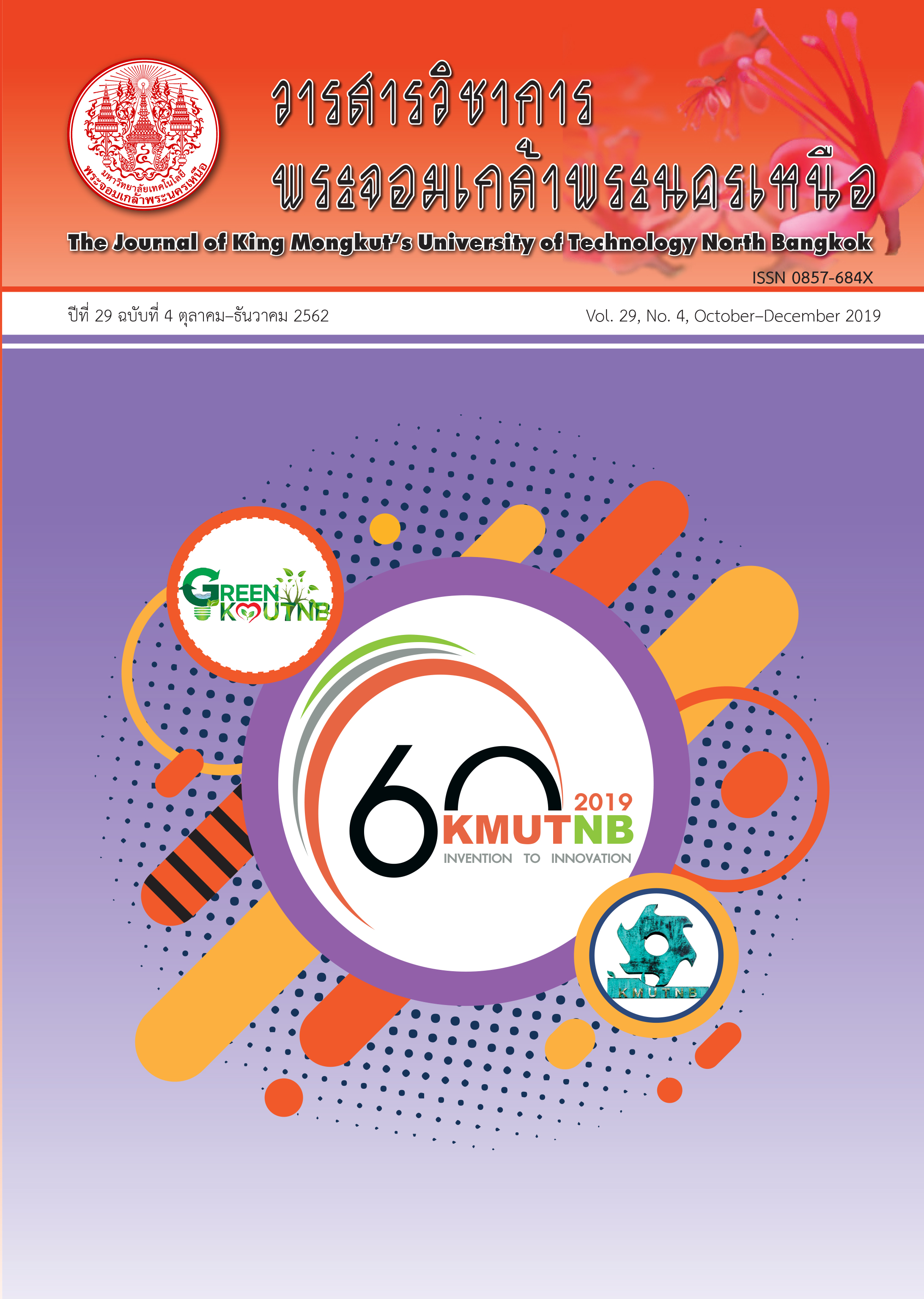A Comparison the Most Appropriate Method for Flood Susceptibility Map in Khlong Nathawi Subwatershed, Songkhla Province
Main Article Content
Abstract
This research aimed to determine the most appropriate method for formulation the flood susceptibility map in Khlong Nathawi subwatershed, Songkhla Province by using the application of geographic information systems and statistical methods. The methods applied to this study were Frequency Ratio (FR), Artificial Neural Network (ANN) and Multiple Logistic Regression (MLR). Based on the past flooding areas and physical factors affecting flood, 11 factors were considered as: 1) rainfall, 2) mean sea level, 3) slope, 4) soil texture, 5) soil drainage capability, 6) soil depth, 7) distance from drainage, 8) stream network density, 9) road network density, 10) land use and land cover and 11) SCS-CN which are sufficient to contribute the flood susceptibility map. Three methods as FR, ANN and MLR were evaluated to verify the effective of classification accuracy in order to select the most suitable method. According to the result, it revealed that the MLR was the most appropriate method. The factors affecting flood were soil depth (shallow), land use and land cover (aquaculture land, paddy fields), soil drainage capability (slope complex), and soil texture (sandy clay) increased the opportunities for flooding. Meanwhile, the soil texture (sand, fine sandy loam), land use and land cover (orchard, pasture and farm) decreased the opportunities for flooding. Flood susceptibility index values were divided into five classes. They were highest, high, moderate, low and lowest range that covering 5.13%, 3.85%, 3.49%, 6.73% and 80.79% of the areas. To measure the efficiency of the method, it found that the success rate curve and the predictive rate curve were 91.84% and 92.52% respectively.
Article Details
The articles published are the opinion of the author only. The author is responsible for any legal consequences. That may arise from that article.
References
[2] Royal Irrigation Department. (2018, June). Nam Plug Pling-Chana Drainage system project in Songkhla province. Royal Irrigation Department. Bangkok, Thailand [Online]. Available: http://kromchol.rid.go.th/lproject/lsp11/2014/index.php/example-pages/55-2014-01-30-10-31-09
[3] T. Anucharn, “Flood susceptibility map based on frequency ratio method at Songkhla Lake Basin in the Southern of Thailand,” Burapha Science Journal, vol. 22, no 3, pp. 106–120, 2017 (in Thai).
[4] S. Puttinaovarat, P. Horkaew, and K. Khaimook, “Configuring ANN for inundation areas identification based on relevant thematic layers,” ECTI Transactions on Computer and Information Technology, vol. 8, no 1, pp. 56–66, 2017.
[5] Y. Kaiyawan, “Principle and using logistic regression analysis for research,” RMUTSV Research Journal, vol. 4, no 1, pp. 1–12, 2012 (in Thai).
[6] Geo-Informatics and Space Technology Development Agency. (2018, January). “Thailand Flood Monitoring System,” Geo-Informatics and Space Technology Development Agency. Bangkok, Thailand [Online]. Available: http://flood.gistda.or.th/
[7] C. J. Huberty, Applied Discriminant Analysis. New York: Wiley Interscience, 1994.
[8] Thai Junior Encyclopedia Project by Royal Command of H.M. the King. (2018, January). General Climate. [Online]. Available: http://saranukromthai.or.th/sub/book/book.php?book=4&chap=6&page=t4-6-infodetail03.html
[9] L. Noichaisin, “Application of GIS on flood risk area assessment in Sa Kaeo Province,” Burapha Science Journal, vol. 21, no 1, pp. 51–63, 2016 (in Thai).
[10] Land Development Department. (2018, October). “Knowledge of soil for Youth,” Ministry of Agriculture and Cooperatives. Bangkok, Thailand [Online]. Available: http://oss101.ldd.go.th/web_soils_for_youth/s_type2.htm
[11] K. Jankaew, Environmental Technology. Bangkok: Interdisciplinary Graduate Programs, Environmental Science, the Graduate School, Kasetsart University, 1998 (in Thai).
[12] L. Fausett, Fundamentals of Neural Networks. New Jersey: Prentice Hall, Inc., 1994.
[13] W. Pornpatcharapong. (2017, September). “Artificial Neural Networks – ANN,” GoToKnow [Online]. Available: https://www.gotoknow.org/posts/163433
[14] U. Amornnimit, “Logistic regression analysis: A choice of risk analysis,” University of the Thai Chamber of Commerce Journal, vol. 23, no 2, pp. 21–35, 2003 (in Thai).
[15] V. Pungpapong, “A brief review on high-dimensional linear regression,” Thammasat Journal of Science and Technology, vol. 23, no 2, pp. 212–223, 2015 (in Thai).
[16] T. Anucharn, “Optimal landslide susceptibility and risk analyses at Khao Phanom Bencha, Krabi Province, Thailand,” Ph.D. dissertation, Institute of Science Suranaree University of Technology, 2015.
[17] T. Anucharn, “A study of physical factors affecting flood susceptibility in Khlong Nathawi Subbasin using multiple logistic regression model,” Burapha Science Journal, vol. 24, no 1, pp. 284–298, 2019 (in Thai).

